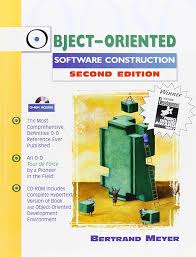Mastering Object-Oriented Software Development: A Comprehensive Guide
The Power of Object-Oriented Software Development
Object-oriented software development is a powerful paradigm that has revolutionized the way we design and build software applications. By organizing code into objects that interact with each other, developers can create more modular, flexible, and scalable systems.
Key Concepts of Object-Oriented Programming (OOP)
In OOP, everything is treated as an object, which encapsulates data and behavior. The key concepts of OOP include:
- Classes: Blueprint for creating objects with shared attributes and methods.
- Objects: Instances of classes that contain data and can perform actions.
- Inheritance: Mechanism for creating new classes based on existing ones to promote code reuse.
- Polymorphism: Ability for objects to take on different forms or behaviors based on their context.
- Encapsulation: Bundling data and methods within a class to restrict access and maintain code integrity.
Benefits of Object-Oriented Software Development
There are several advantages to using OOP in software development:
- Modularity: Code is organized into self-contained objects, making it easier to manage and update.
- Reusability: Objects can be reused in different parts of the application or in other projects, saving time and effort.
- Maintainability: Changes made to one part of the codebase do not necessarily impact other parts, reducing the risk of introducing bugs.
- Scalability: OOP allows for building complex systems by breaking them down into smaller, more manageable components.
- Ease of Testing: Objects can be tested individually, leading to more efficient testing processes and improved quality assurance.
Popular Object-Oriented Programming Languages
Many programming languages support object-oriented programming principles. Some popular OOP languages include Java, C++, Python, C#, and Ruby. Each language has its own syntax and features for implementing OOP concepts effectively.
Understanding Object-Oriented Software Development: Key Concepts and Examples
- What is object-oriented programming with example?
- What are the 4 basics of OOP?
- What is an example of object-oriented software development?
- What is object-oriented programming software?
- Is OOP used in software development?
What is object-oriented programming with example?
Object-oriented programming (OOP) is a programming paradigm that structures code around objects, which are instances of classes containing data and behavior. In OOP, objects interact with each other to perform tasks, making the code more modular and easier to manage. An example of object-oriented programming can be seen in a simple banking system. A “BankAccount” class could define properties such as account number, balance, and owner name, along with methods like deposit and withdraw. Multiple instances of the BankAccount class can be created for different customers, each with its own unique data. This encapsulation of data and behavior within objects is a fundamental concept of OOP that promotes code reusability and maintainability.
What are the 4 basics of OOP?
In object-oriented software development, understanding the four basics of OOP is crucial for mastering this programming paradigm. The four fundamental principles of OOP are encapsulation, inheritance, polymorphism, and abstraction. Encapsulation involves bundling data and methods within a class to restrict access and maintain code integrity. Inheritance allows for creating new classes based on existing ones to promote code reuse. Polymorphism enables objects to take on different forms or behaviors based on their context. Abstraction involves hiding complex implementation details and providing a simplified interface for interacting with objects. By grasping these core concepts, developers can effectively design and build robust, scalable software systems using object-oriented programming techniques.
What is an example of object-oriented software development?
In the realm of object-oriented software development, a classic example that often comes to mind is the creation of a banking system. In this scenario, various objects such as accounts, customers, transactions, and employees are defined with their respective attributes and behaviors. For instance, an “Account” object may have properties like account number, balance, and account type, along with methods to deposit funds, withdraw money, and check the balance. Through interactions between these objects using inheritance, encapsulation, and polymorphism principles, a robust and scalable banking system can be designed and implemented following the object-oriented paradigm.
What is object-oriented programming software?
Object-oriented programming software is a methodology used in software development where code is organized around objects that encapsulate data and behavior. In this paradigm, everything is treated as an object, which can interact with other objects to perform tasks. Objects are instances of classes that define their attributes and methods. Object-oriented programming promotes modularity, reusability, and maintainability by breaking down complex systems into smaller, more manageable components. By utilizing concepts such as inheritance, polymorphism, and encapsulation, developers can create flexible and scalable applications that are easier to design, implement, and maintain.
Is OOP used in software development?
In the realm of software development, Object-Oriented Programming (OOP) is a widely utilized paradigm that plays a fundamental role in creating robust and scalable applications. OOP is extensively employed by developers across various industries due to its ability to enhance code organization, promote reusability, and facilitate easier maintenance of complex systems. By structuring code into objects that encapsulate data and behavior, OOP enables developers to build modular and efficient software solutions. The adoption of OOP principles has become a standard practice in modern software development, highlighting its significance in shaping the way applications are designed and implemented.




